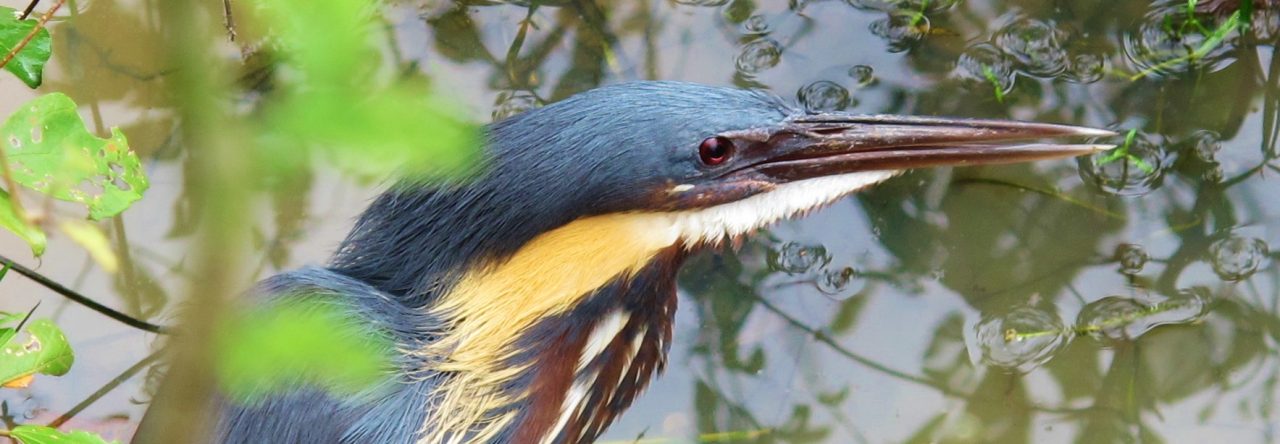
Encouraged by eBird reports of a long list of midsummer seabirds lingering offshore from Qigu, I finally found the motivation to haul myself out of bed before 5.00am for the familiar 90-minute scooter ride to south-western Taiwan’s foremost migration and seabird site. With such species as Aleutian Tern, Brown Noddy and Swinhoe’s Storm-Petrel all seen recently from Qigu, my only realistic chance of an out-and-out lifer in Taiwan these days is probably to spend lots of time peering at the horizon through a telescope.
I arrived at around 7.45am and set myself up at the North Bank, next to what is described as a lighthouse but in reality resembles nothing more impressive than an overgrown tripod. It quickly became apparent that today would not be a classic day for passing seabirds, and after 45 minutes my haul comprised just a handful of lingering Great Crested Terns, and four Common Terns heading south. Lone seawatching is a real test of patience and endurance, and in my experience it is bearable only when there are plenty of birds to see. By contrast, when you’ve got company it can be enjoyable even when nothing much is passing through. In my formative birdwatching years, I would spend many hours in the seawatching hide at Dungeness, sometimes seeing next to no birds but still enjoying the banter between the birders.
Giving up on the sea, I drove inland and made a circuit of some of the areas I remembered to be good for passage waders. The usual suspects have already started passing through in decent numbers – common migrants in these parts include the likes of Marsh, Broad-billed, Curlew and Wood Sandpipers, Long-toed and Red-necked Stints, and Mongolian, Kentish, and Little Ringed Plovers.
By the time I reached the Qigu seawall, it was already starting to get seriously hot. I stopped the scooter when I heard the distinctive flight call of a Grey-tailed Tattler, and got onto the bird in flight – my first year tick of the day. Shimmering in the distant heat haze was the Qigu sandspit, with what appeared to be quite large numbers of terns milling about. It’s a bit of a schlep across the sand and mudflats to get there, and involves wading through a creek halfway out, but the terns were a tempting draw and despite the realistic prospect of catching sunstroke, I headed out.
While I was taking off my shoes and socks to cross the creek, I spotted an egret that was racing around in the shallows, low to the ground in the typical hunting style of a Chinese Egret. Setting up my scope, I was able to enjoy excellent views in good light of this uncommon passage migrant, quickly checking off the key features that distinguish this bird from the abundant Little Egret and also the potential pitfall of a white-phase Pacific Reef Egret – namely the green legs, relatively long, slender bill (compared to Pacific Reef), and all-dark upper mandible. Also in this area were several Eurasian Curlew and one Whimbrel, and small numbers of Oriental Skylarks flushed in the drier, grassier areas of the mudflats.
Once out at the sandspit, I spent quite some time with the terns. My first priority was to look through the 50 or so Great Crested Terns in the hope of finding a Chinese Crested Tern among them, a holy grail of a bird which has been reported several times here this year. Such extreme good fortune was not to come my way, but I was partly compensated by several Black-naped Terns. I was confused for a time by some pale, full breeding plumaged sea terns that structurally appeared to be Roseate Terns, but with all orange-red bills with no black tip whatsoever! Seeing the birds in flight appeared to confirm that they were Roseates, and subsequent research indicated that tropical races of Roseate Tern can indeed develop an all-red bill by late summer. This was not only a Taiwan tick for me, but also an addition to my Oriental Asia list. Looking back to those Dungeness days once again, Roseate Tern was always one of the very best birds to hope for on a May morning – that site provided me with my first ever sighting of this species, a pink-flushed, black-billed, long tail-streamered spring-plumaged adult at the power station outfall.
Trudging back across the baking sand at around 11.30am, I felt I was beginning to understand what it might feel like to be lost in the Sahara Desert. Back on the scooter, my continued circuit of the seawall turned up a surprise Pheasant-tailed Jacana – a breeding-plumaged adult, no less. This is the first eBird record of this species at Qigu, although they breed not too far inland from here. A final throw of the dice with the wader-watching produced a Terek Sandpiper and seven Dunlin among the commoner species in a flooded field.
Oriental Asia tick: Roseate Tern (total 1,162).
2016 World Year ticks: Black-naped Tern, Sacred Ibis, Grey-tailed Tattler, Oriental Skylark (total 788).
